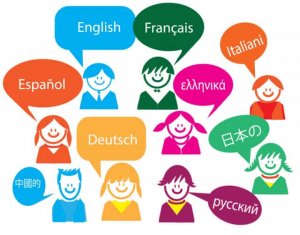Translation is a process that requires special skills, knowledge and professional training to create a high-quality final product for the customer. Since it is made by humans, it is not acceptable machine translation completely, it is normal for errors to occur.
When translating documents, especially those that are long or complex, some mistakes can be made. They may be due to the complexity of the topic, the limited translation time, the inexperience of the client (who has not provided all the necessary information) or the translator (such as someone who has not done enough research). ).
Here you can find examples of The most common translation mistakes that translators have and a few ideas about how to translate properly.
Common Mistakes You May Make
The time and effort involved in translation depends on a number of factors including: source and target languages, type of document, length of text, complexity of the problem, submission deadlines, and usually translator's experience.
Translating a text from one language to another when both languages belong to the same language family is much easier than translating from two very different languages, such as from Chinese to English. However, when two languages are too similar, translators may be mistaken to use the same word order or similar punctuation to the source language.
In general, we can divide the types of errors into two main groups: technical errors and personal or subjective errors. Here is an example of the most common types of errors:
1. Some common technical errors
These mistakes are caused by the translator sticking to the format of the original text and making some mistakes in sentences, structure or grammar. The most common technical errors are:
- Maintain the correct word order of the source language.
- Use punctuation as in the original text.
- Maintain the same sentence length.
- Use the same idioms as in the source language.
- Do not change the tense of the verb.
- Preserve date format, name, currency.
>>> See more: List 5 Most Common Mistakes When Finding Translation Services
2. Some common personal mistakes
Sometimes translators make mistakes for personal reasons, the most common reasons include:
- Tired of working too many hours continuously.
- Overconfident because they had translated similar texts a lot before and didn't pay attention to the translation this time.
- Don't pay attention to the recently introduced term.
- Translating text lacks enthusiasm because it looks too boring, too long, or they feel they need to be paid more to do it.
- Based on previous experience with the language – this is often the case with new translators who are just starting out. For example, they may feel confident because of the fact that they have worked with the language as teachers, but are not familiar with translation best practices.
These mistakes can be easily avoided if you recognize them and constantly learn to improve your abilities. Part of the key skill set of an interpreter is the desire to learn new things and to constantly develop yourself.
>>> See more: How To Succeed As A Professional Translator?
How To Translate Correctly?
If you are aware that mistakes do exist then you can certainly learn to avoid them and correct things. The main purpose of translation is to convey a clear message to the reader in their own language. To do that, professional translators rely on their language knowledge and skills to:
- Change the word order to match the target language requirements.
- Rearrange the phrases correctly .
- Use correct punctuation
- Divide the sentences into two or three parts if necessary.
- Rewrite phrases or sentences so that they are correct words in the target language and convey a message with the same feel or intensity as the original text.
- Correctly format numbers such as dates, names and street numbers, currencies written differently in different languages.
- Transliteration or transliteration of the name. Check with the client which wording they have chosen in the past and stick to it.
- Write names properly in several languages. For example, in Chinese, the family name is written before the name. When you translate a text into English, make sure to reverse it to avoid confusion.
These are just some guidelines that a good interpreter should follow to avoid making mistakes while translating. Taking enough time to pre-read the text and then re-read the translation is also paramount. Adequate rest and spending a few hours not reading the text are also prerequisites for creating a good translation.
All in all, as a translator, you need to keep learning and developing your language every day. Stay tuned for new developments in the field.
Each text is created with the purpose to convey a certain message. So the work of interpreters Good at helping clients communicate the same idea in a foreign language. Although translation is not the same as interpreting, it focuses more on finding the exact match, but in general it still aims to convey the message. After all, making mistakes is human, and translators are no exception. That's why a specific translation process, including quality control, is needed to eliminate translation errors to a minimum and maintain a high quality of translation.

Nguyen Trung Khang - Talented interpreter and translator, passionate about translation
Nguyen Trung Khang is a talented interpreter and translator, with many years of experience in the field of translation and linguistics. He graduated from Ho Chi Minh City University of Education, majoring in Linguistics in 2015.
After graduating, Mr. Khang participated in a professional interpretation and interpretation training course at the University of Foreign Languages - Hanoi National University. He achieved a high-level certificate in interpreting and interpreting, and was also awarded a master's degree in linguistics.


